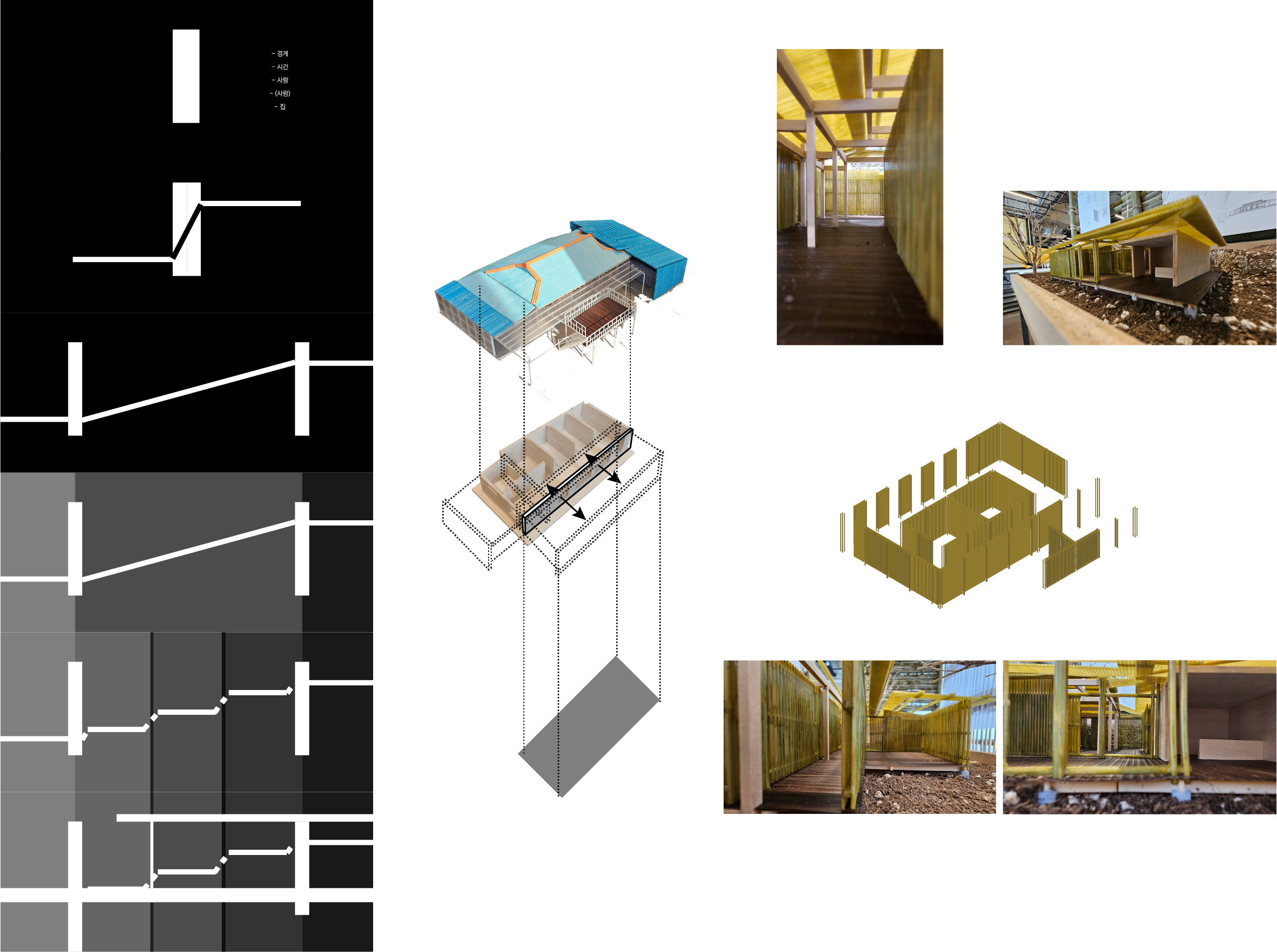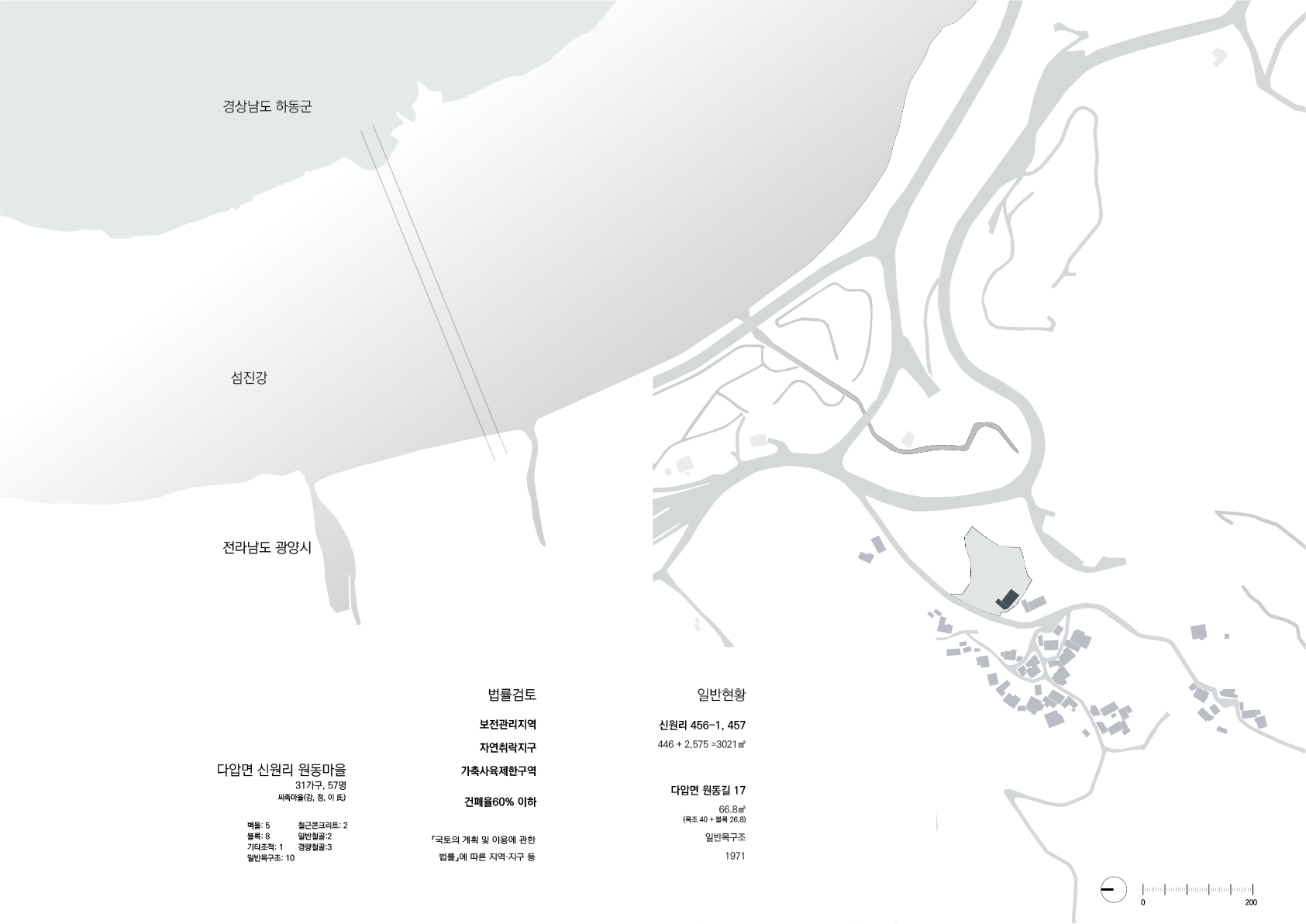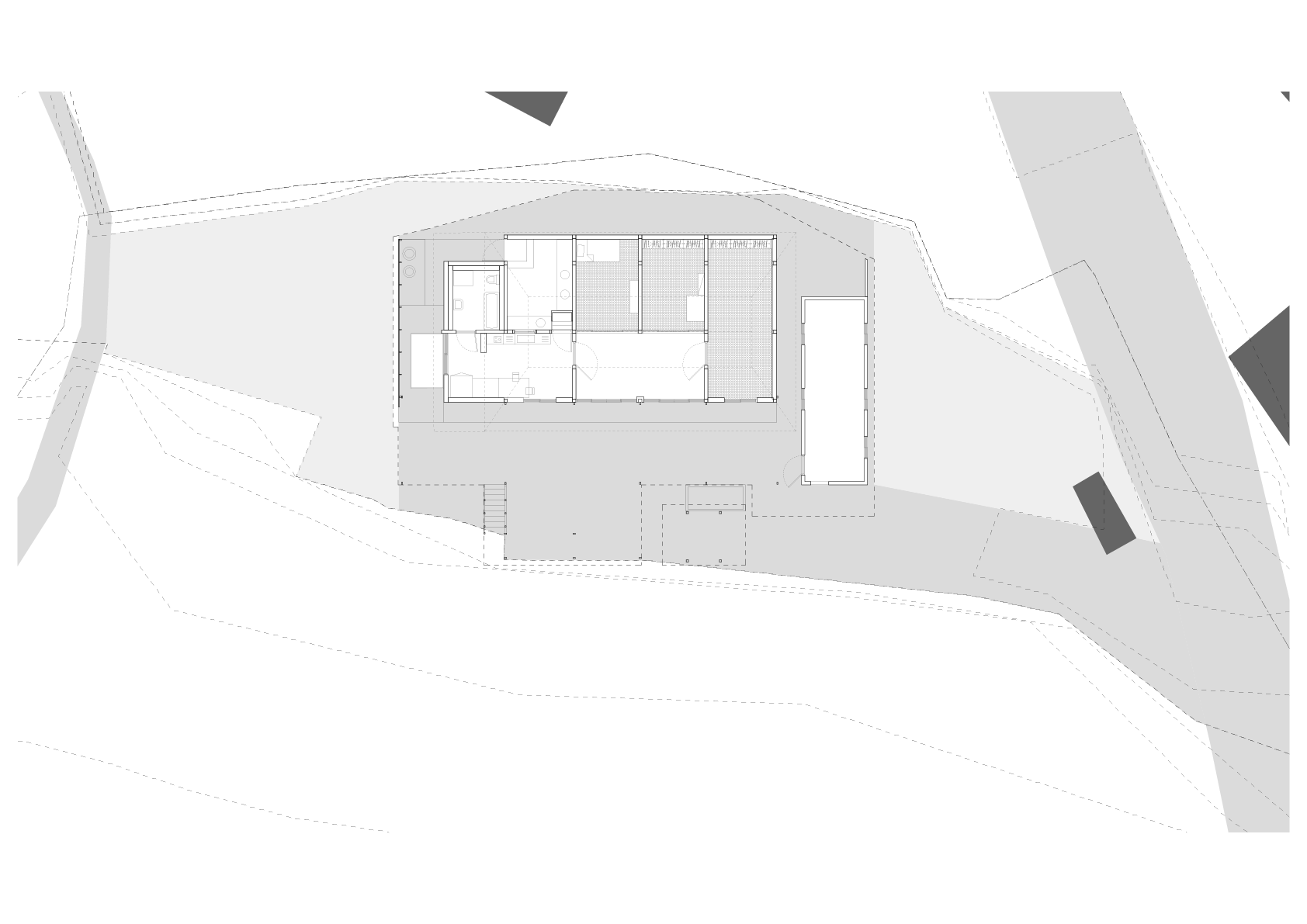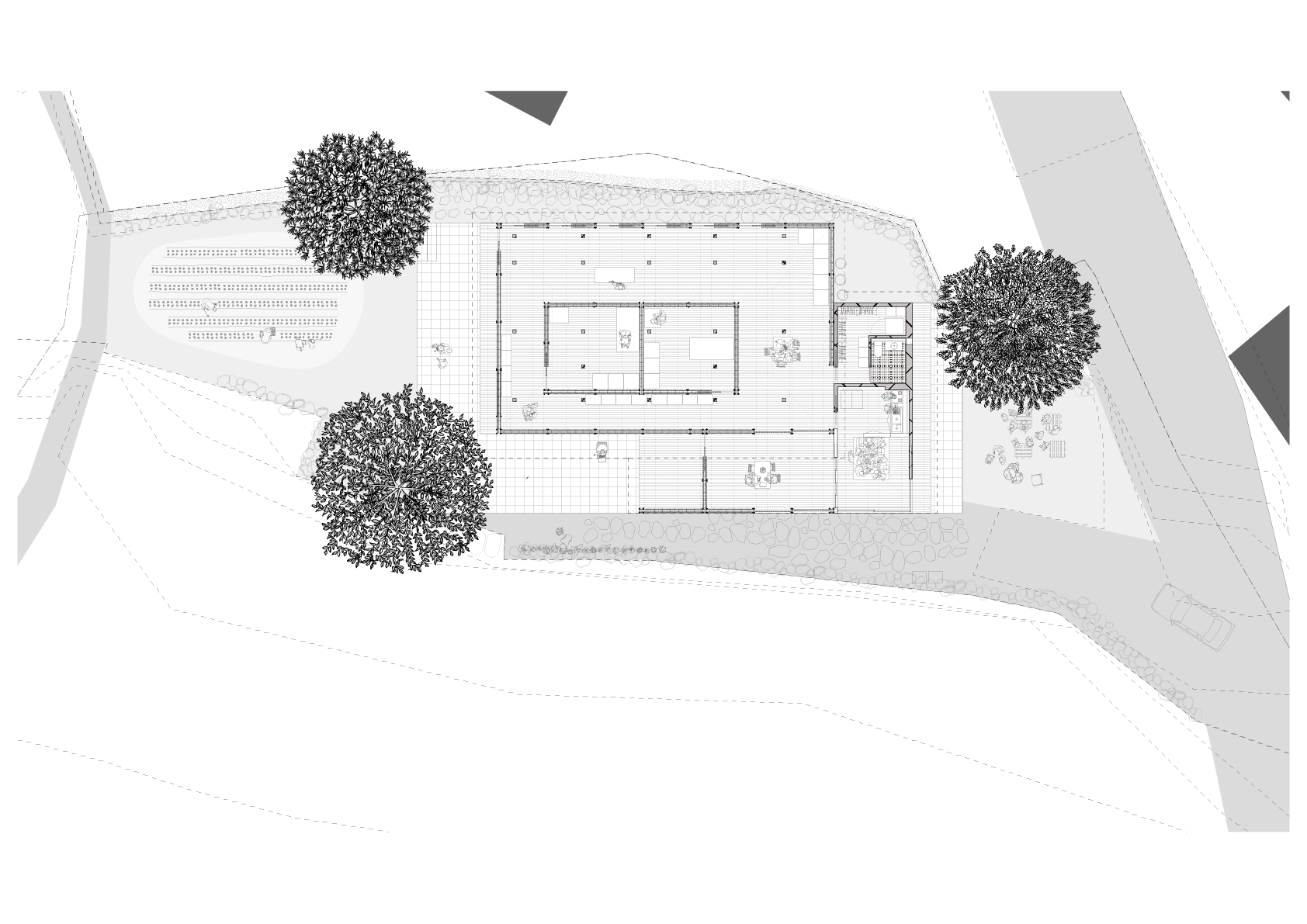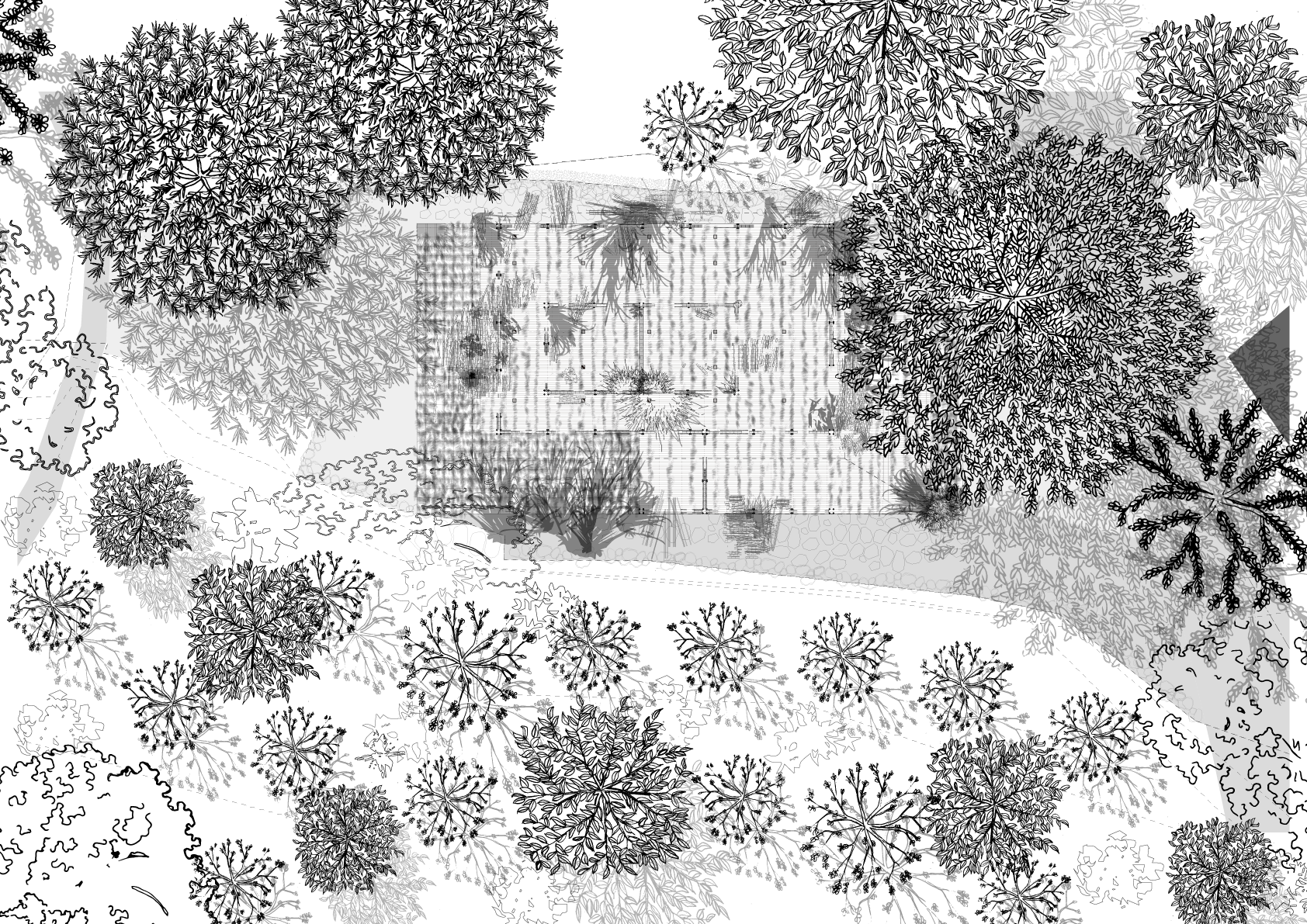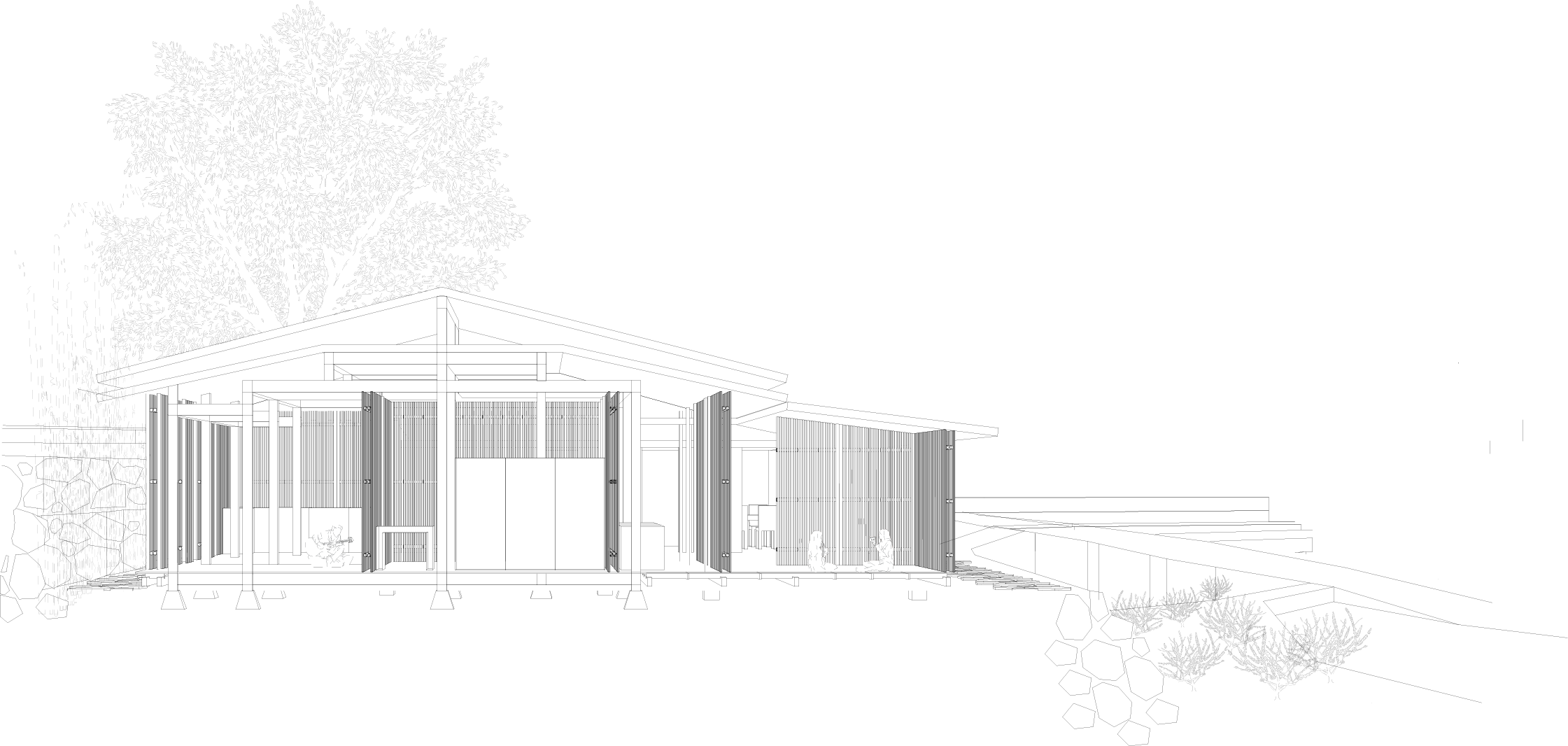강창환_해체: (사람)을 위한 집
사람보다도 오랜시간 지구 위에 존재할 집이 어떻게 남아있어야 할까?
짓는 것이 아니라 없애는 방식으로도 좋은 건축을 할 수 있지 않을까?
[해체]
두꺼운 경계를 형성하던 하나의 벽을 벌려, 사이 공간을 만들어낸다.
하나의 벽이 해체되며 나타난 세 개의 켜는 단절적인 기존의 경계와 달리 경계의 임계를 낮추고, 서로 다른 특성, 서로다른 지향을 가진 공간이 된다.
[사람을 위한 집]
벽과 지붕과 바닥이라는 건축의 기본적 요소의 조합으로 이루어진 세 개의 켜로 집의 경계는 재구성된다.
켜들은 서로 열리고 닫히며 중첩된다. 켜의 중첩은 물리적 공간의 제약 안에서도 새로운 공간을 만들어 낸다.
시간과 공간의 변화와 순환을 적극적으로 받아들이는 새로운 경계는 공간에 깊이를 만들어낸다.
[(사람)을 위한 집]
사람을 위한 집은 사람이 괄호쳐지는 시간부터 스스로 해체되기 시작한다.
얕은 경계를 구성하는 물리적 결합은 분해되기 시작한다.
시간에 따라 경계는 틈이 벌어지고, 풍화는 가속화된다.
벌어진 틈, 더욱 얕아진 경계의 임계점은 낮아진다. 경계를 넘어 자연은 들어선다.
사람을 위한 집은 또 다른 생명을 위한 집이 되어 간다.
How should a home exist on Earth for longer than humans?
Can we achieve good architecture through deconstruction rather than construction?
[Deconstruction]
A single wall, which once formed a thick boundary, is pulled apart to create an in-between space. As one wall is deconstructed, three layers appear. Unlike the previously isolated boundary, these layers lower the threshold of the boundary and become spaces with different characteristics and orientations.
[A Home for Human]
The boundary of the home is redefined through three layers composed of basic architectural elements: walls, roof, and floor. These layers open and close to each other, overlapping to create new spaces even within the constraints of physical space. This new boundary, which actively embraces changes and cycles of time and space, creates depth to the space.
[A Home for (Human)]
A home for humans begins to deconstruct from the moment the human is bracketed. The physical connections that form the shallow boundary start to disassemble. Over time, the boundaries develop gaps, accelerating weathering. The opened gaps and further lowered threshold of the boundary invite nature inside. The home for humans transforms into a home for other forms of life.
